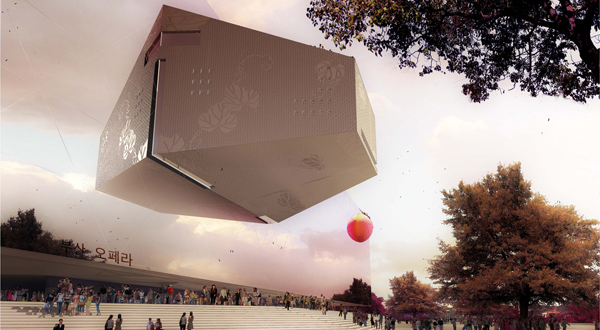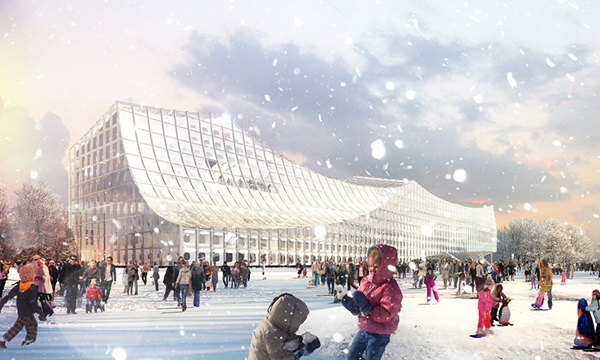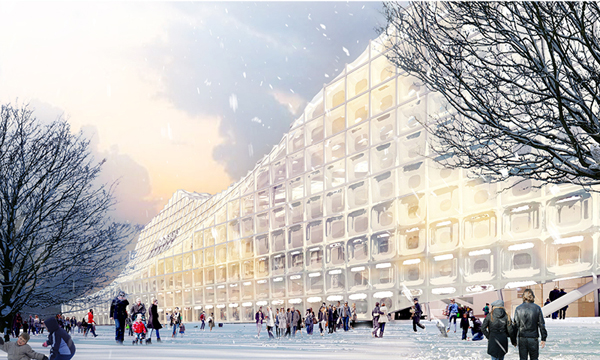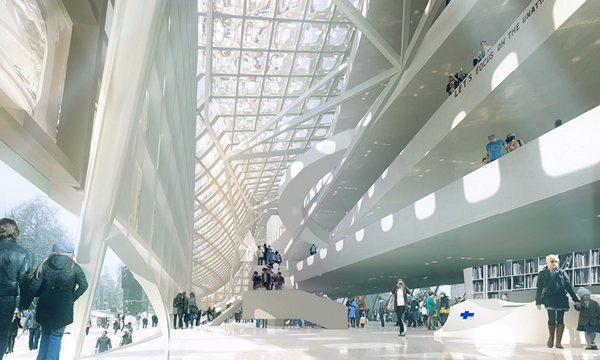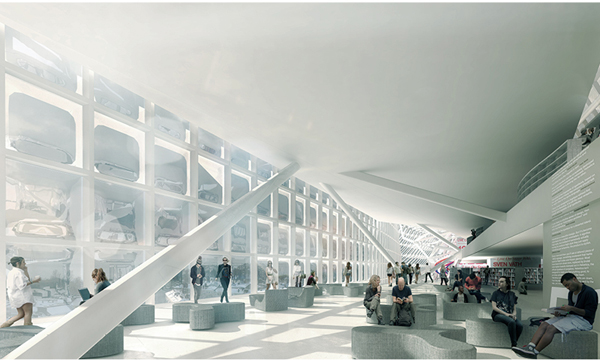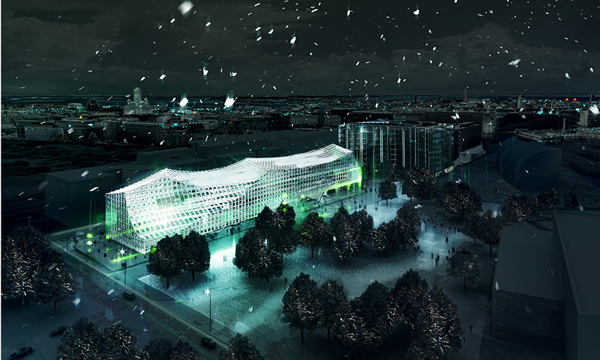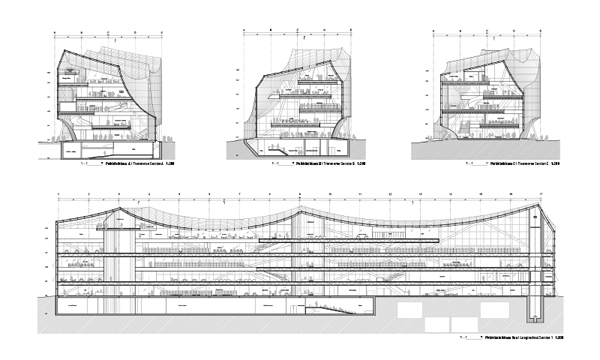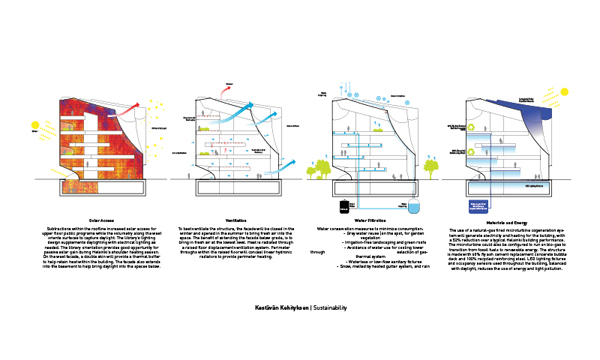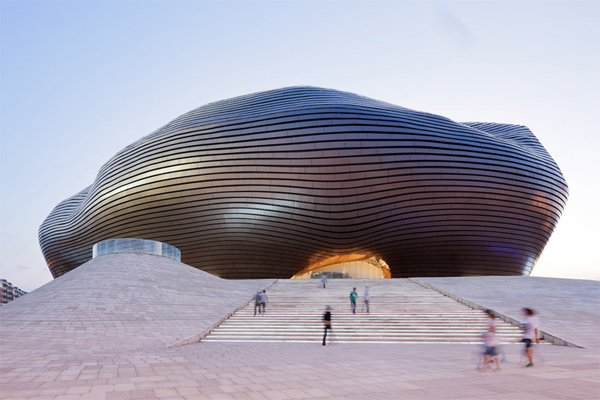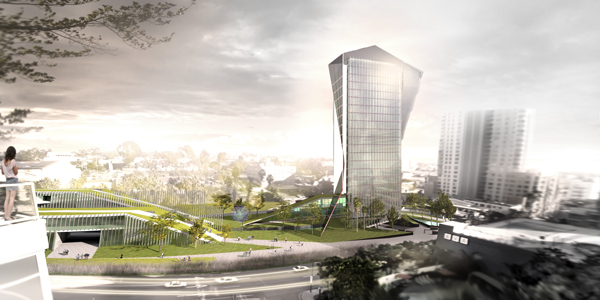Architects at international office Sériès et Sériès believe that experiencing the drama of opera must begin with its vessel and therefore they advocate new role of opera house in creating a dramatic experience that begins before the curtains draw open and lasts well after. The Opera today not only represents cultural identity but is there to create and shape growing cultural awareness. It is no longer just a passive playground for elite but an interactive experience, responsive to our aspirations and expectations. It is place to meet and socialize in a common cultural context, a spectacle that requires whole new attractive, open and inviting typology.
Their competition proposal for Busan Opera House in South Korea aimed to create an “anomaly” in the sky – through the strategic use of standard building materials, the orientation of the masses and the deployment of specific programmatic sections. Desired castle in the sky is wrapped in a pattern of laminated, mirrored glass panels, creating continuum of illusions – of the public slipping beneath the sky and the building being erased by its own skin. Read the rest of this entry »

